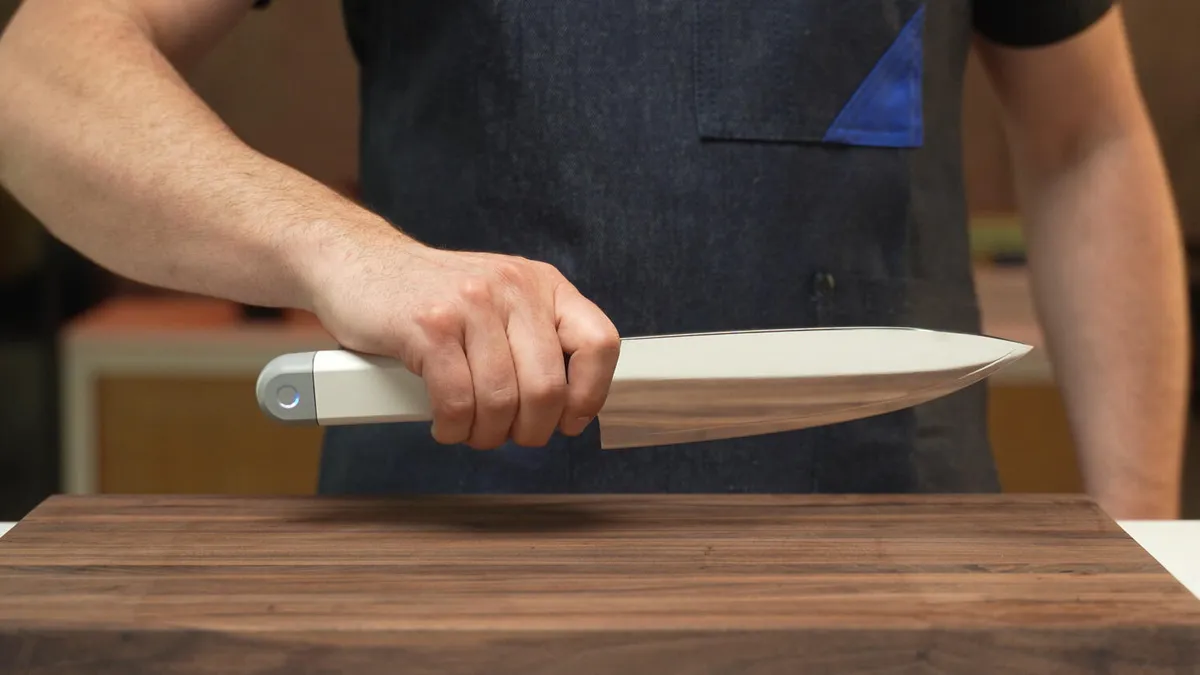‘World’s First’ Ultrasonic Chef’s Knife Vibrates 40,000 Times Per Second for Easy Cutting

Cutting onions and tomatoes is about to get a high-tech upgrade. Seattle Ultrasonics today unveiled the C-200 which they’re calling the world’s first ultrasonic chef’s knife for home cooks. The $399 knife harnesses ultrasonic technology used in industrial settings, vibrating over 40,000 times per second to “reduce friction and the force needed to make cuts by 50%”.
The brainchild of culinary innovator Scott Heimendinger, the C-200 looks like a standard chef’s knife until you press a power button on the side of the handle. According to the press release, those microscopic vibrations — which you can’t see, hear, or feel — create what the company calls a “nonstick” effect that prevents food from sticking to the blade.
“I’ve seen firsthand how industrial ultrasonic technology makes clean, effortless cuts,” said Heimendinger, who spent nearly six years developing the knife. “I asked myself, ‘Could I fit that technology into a chef’s knife?’ After years of research, development, and more than a few setbacks, the answer is yes.”
Built like a traditional knife, powered like a gadget
Despite its futuristic functionality, the C-200 maintains the features of good knife design. The 8-inch blade is made of Japanese AUS-10 san mai stainless steel, which is durable and corrosion-resistant. You can still rock chop herbs, smash garlic, and hand-wash it like any other knife. The button and grip work for both righties and lefties, and the blade can be resharpened using traditional methods.
The knife’s cordless design includes a removable battery pack that charges via USB-C. Seattle Ultrasonics offers a $149 Wireless Charging Tile made from solid hardwood that can mount to walls without drilling for those wanting a more elegant charging solution.
A 9-minute YouTube video distributed with the release explains the science of ultrasonic cutting and demonstrates how the vibrating knife works.
Tech meets kitchen testing
The C-200 represents his latest attempt to bridge the gap between professional culinary technology and home cooking. While ultrasonic cutting has been used industrially for years, miniaturizing it into a kitchen knife required solving challenges around power management, ergonomics, and durability.
Availability and pricing



